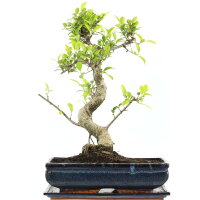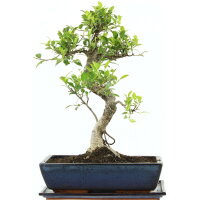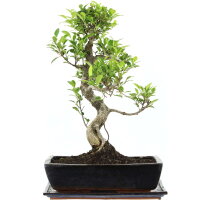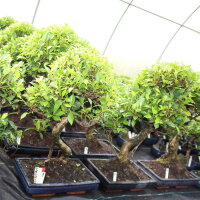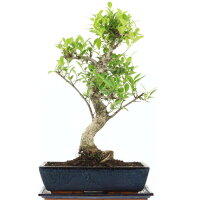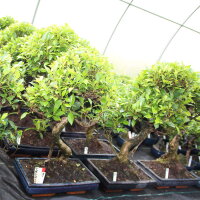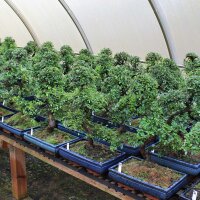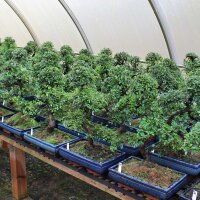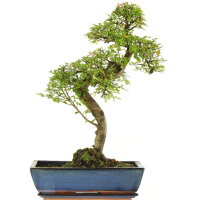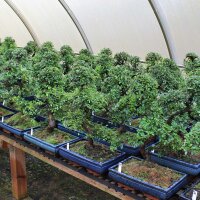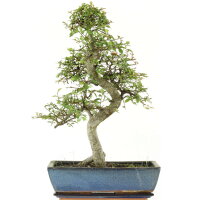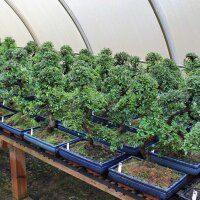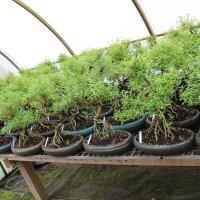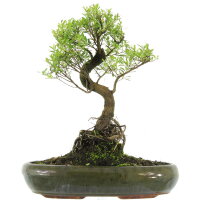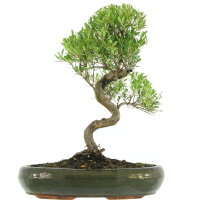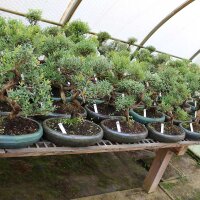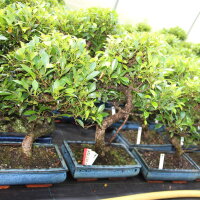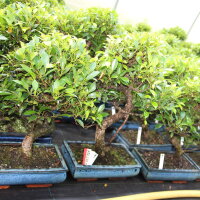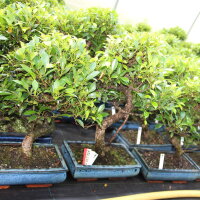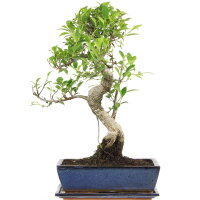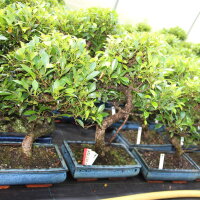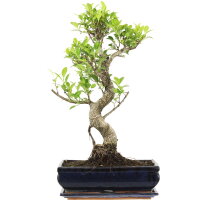Indoor bonsai
Indoor bonsai are not hardy. This means that when caring for bonsai, you must ensure that you protect these bonsai species from low temperatures in the cold season. Bonsai styling does not differ from outdoor bonsai.
Most indoor bonsai (e.g. fig tree, privet, pepper tree) are imports from the tropics of Asia. Temperatures >10°C also prevail there in winter and bonsai from these areas do not need to be frost hardy. They need a bright but frost-free location in winter. In summer, these bonsai trees can be placed outside.
Indoor bonsai for sale
We import our indoor bonsai directly from the producer. The plants arrive with us in the spring and are completely revised in the summer. Here you can buy your indoor bonsai. You get exactly the tree you chose in the shop. Safely packaged. Have fun choosing.
Care
Light and temperature

Frequently offered indoor bonsai
Indoor bonsai, like all plants, need light. A lot of light. They perform photosynthesis to gain energy. In a normal apartment, the supply of light for bonsai is low. If the temperatures allow in spring-summer indoor bonsai should be placed outdoors. In winter, when outdoor location is not possible, choose a very bright window place for your bonsai.
The metabolism of bonsai is temperature dependent, i. high temperature = high metabolism. High metabolism goes hand in hand with high energy consumption. In a heated room is accordingly the energy consumption of the bonsai tree high. At the same time, energy production is low due to the low light in the apartment. That's a problem: High consumption - Low energy production. Help the tree through a very bright and at the same time cool location.
Watering
Bonsai are living things. They have specific needs. And the specific needs vary, depending on the environmental conditions. An indoor bonsai in summer on the balcony needs much more water than the same tree in winter in the room. On hot days more needs to be poured. Also on windy days. Important when watering: Most trees do not like too much water or too little. The middle is usually right. Tip: Just lay your flat hand on the surface of the earth. If it feel damp it does not usually need to be poured. A ball shower for bonsai is well suited for irrigation
Air humidity
Especially indoor bonsai from tropical areas are used to a high humidity and need it. Our apartments are too dry. The humidity in a normal apartment is much lower. One way to support an indoor bonsai with low humidity is to place it in a drip tray filled with water and expanded shale / pumice gravel. It raises the humidity, extends the watering intervals and also looks quite decorative.
Fertilization
Fertilization only makes sense if the tree can do something with the bonsai fertilizer. In winter, when your indoor bonsai hardly grows due to lack of light, they hardly need fertilizing. All in all, you can say: fertilize bonsai in the growing season from March to September. But then properly. The usual liquid bonsai fertilizers and organic solid bonsai fertilizer like Biogold or Hanagokoro are practical, safe and effective. It does not matter which one you take. They are comparable.
Import
Our indoor bonsai offered in the shop we import directly from China. Every year we fly directly to the producers and select the best trees for you. Below are a few pictures of the imports.






